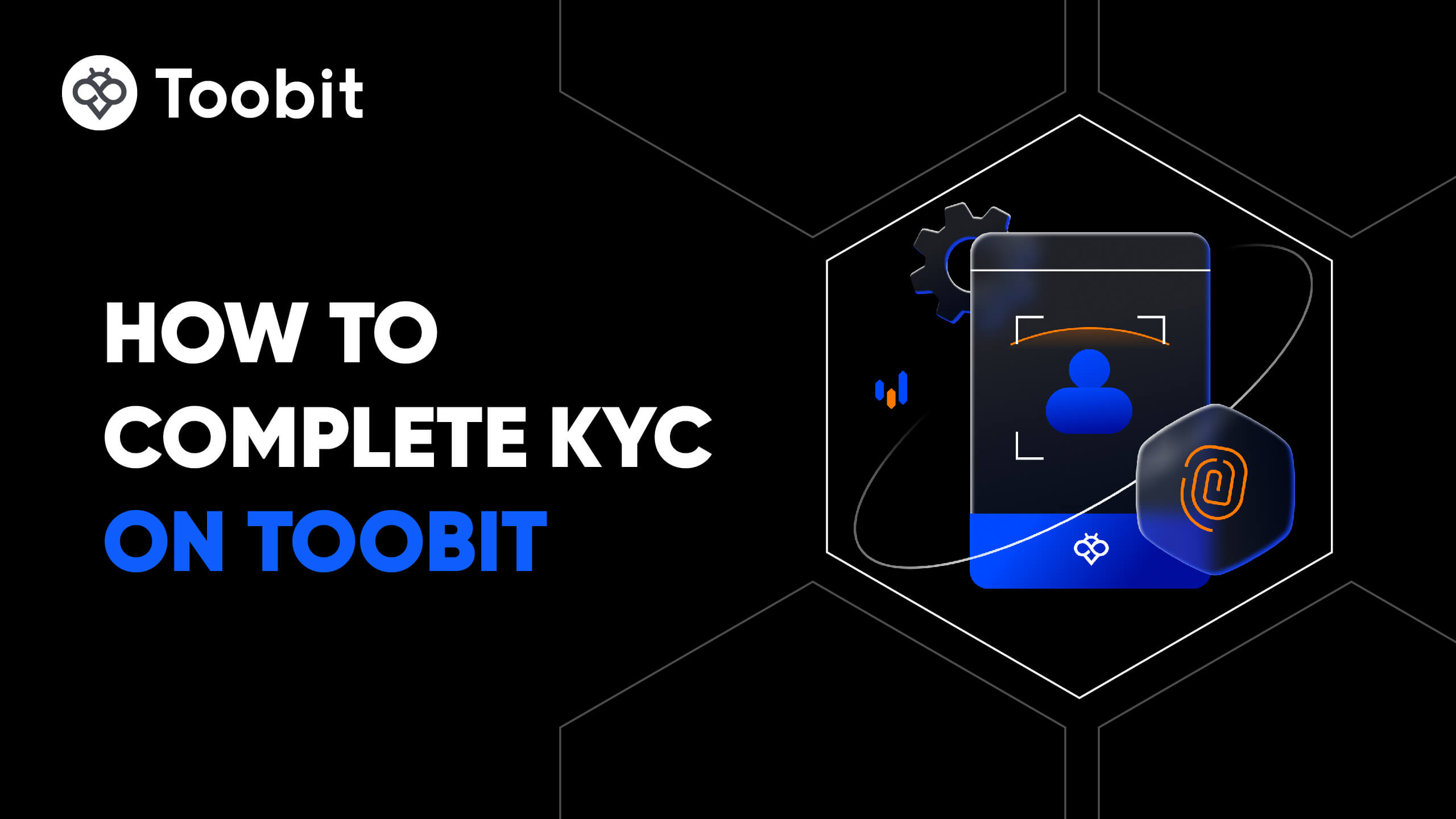Ethereum Classic price
ETCEthereum Classic market info
Live Ethereum Classic price today in USD
How much is 1 ETC worth in ?
About Ethereum Classic(ETC)
Ethereum Classic price history
Why does the price of Ethereum Classic always fluctuate?
What factors affect the performance of Ethereum Classic prices?
Global Ethereum Classic prices
How to buy Ethereum Classic
Create your free Toobit account
Sign up on Toobit with your email address/mobile phone number and country of residence, and create a strong password to secure your account.
Verify your identity
Complete identity verification by submitting your personal details and a valid photo ID.
Add a payment method and buy Ethereum Classic (ETC)
Add a credit/debit card or bank account after verifying your Toobit account. Use multiple payment options to buy Ethereum Classic on Toobit.
Trade ETC perpetual futures
After signing up on Toobit and buying USDT or ETC tokens, you can start trading derivatives, including ETC futures and margin trading to increase your income.
Join ETC copy trading with lead traders
After signing up on Toobit and successfully buying USDT or ETC tokens, you can also start copy trading by following Lead Traders.
Where can I buy Ethereum Classic?
Buy crypto on the Toobit app
Sign up within minutes to purchase crypto via credit card or bank transfer.
Trade on Toobit
Deposit your cryptocurrencies to Toobit and enjoy high liquidity and low trading fees.
Video section — quick verification, quick trading

How to complete identification on Toobit and protect yourself from fraud
- 1.Log in to your Toobit account.
- 2.If you're new to Toobit, watch our tutorial on how to create an account.
- 3.Click on the profile icon in the upper right corner of the navigation bar, then tap on Identification page.
FAQ About Ethereum Classic (ETC)
Who are the founders of Ethereum Classic?
Ethereum Classic is the legacy chain of the original Ethereum network, making its true creator the Ethereum co-founder, Vitalik Buterin. ETC emerged from a contentious fork in July 2016. This split occurred because participants disagreed on whether to reverse the blockchain to undo the effects of the DAO hack. ETC represents the original, un-reversed chain, upholding the principle of immutability. The project maintains that it has no "official" team, emphasizing its decentralized nature, where anyone can join and contribute to its development.What is Ethereum Classic (ETC) used for?
ETC functions similarly to its counterpart, ETH, on the Ethereum Classic network. Its primary uses are to secure the Ethereum Classic Blockchain through its Proof-of-Work (PoW) consensus mechanism and to act as a peer-to-peer (P2P) payment token. ETC is also essential for paying transaction fees (Gas), enabling the deployment of smart contracts, and powering Decentralized Applications (DApps) built on the ETC network. You can find the live ETC price on Toobit.What is the Ethereum Classic Foundation?
The Ethereum Classic Foundation is not a group of people, but an idea.The Ethereum Classic Foundation, unlike other blockchains that are developed by corruptible central institutions, is a set principles that guide decision-making to maximize ETC's lifespan and prevent it from being captured. It is a robust idea that is resistant to many types of attacks.Participants maintain and refine a doctrine decentralization which can be easily articulated and understood over time.Ethereum Classic's Foundation is the most important and strongest element. ETC was created in response to the DAO and as a recognition that a blockchain’s value and utility are ultimately dependent on its principles. ETC's social and technological layers are designed to prevent outside forces overruling The Code is Law. This is done through the constant pursuit and decentralization maximalism.How many Ethereum Classic (ETC) coins are there in circulation?
Ethereum Classic has a fixed maximum supply of 210,700,000 ETC coins, approximately ten times the supply of Bitcoin (BTC). Unlike Ethereum (ETH), which has no hard cap, ETC adopted this monetary policy in December 2017 to introduce scarcity. The ETC supply utilizes a deflationary mechanism where block rewards are reduced by 20% approximately every two years or every 5,000,000 blocks, known as the ""Fifthening."" The last reduction occurred in June 2024, decreasing the block reward to 2.048 ETC. This predictable issuance schedule is a key factor when considering any ETC price prediction.How is Ethereum Classic different from Ethereum?
While Ethereum Classic (ETC) and Ethereum (ETH) share a common history from the original 2015 launch, they diverge significantly in governance and consensus mechanism.- Consensus Mechanism: ETC remains committed to the original Proof-of-Work (PoW) algorithm for network security and immutability. In contrast, Ethereum (ETH) transitioned to a Proof-of-Stake (PoS) consensus mechanism following ""The Merge"" in September 2022.- Philosophy and Governance: ETC champions a decentralized governance system rooted in its ""Code is Law"" principle, maintaining the chain's immutability even after the controversial 2016 DAO hack. Ethereum's governance is comparatively more centralized, with the Ethereum Foundation and core development team playing a key decision-making role. These philosophical differences are often cited in long-term ETC price prediction analysis.What factors affect ETC Price?
The price of Ethereum Classic (ETC) is influenced by various factors, drawing parallels with those affecting its larger counterpart, Ethereum (ETH). These factors can be broadly categorized into internal and external influences, with specifics including market demand, adoption rates, technological advancements, and overall cryptocurrency market trends.- Market dynamics: Market demand, adoption rates for dApps and use cases, and overall cryptocurrency market trends (like bull or bear cycles) are major drivers.- Technological factors: Positive platform developments, upgrades, and maintained network security are crucial. Conversely, security incidents, such as past 51% attacks, can negatively impact investor confidence and the ETC price prediction.- Monetary policy: ETC's fixed supply and predictable, decreasing issuance (the ""Fifthening"") are deflationary features that underpin its long-term value proposition.- Competition and macroeconomics: Competition with PoS chains like Ethereum (ETH) and PoW chains like Bitcoin (BTC), alongside global macroeconomic factors such as inflation, also affect ETC's valuation. Accurate ETC price prediction requires factoring in this unique combination of influences.How does ETC price compare to other cryptocurrencies like BTC and ETH?
The ETC price is generally correlated with major cryptocurrencies like Bitcoin (BTC) and Ethereum (ETH), often moving in the same direction as the broader market. However, ETC typically exhibits higher price volatility due to its comparatively lower market capitalization, liquidity, and trading volume compared to BTC and ETH. Furthermore, ETC's price is also influenced by factors unique to its ecosystem, such as its Proof-of-Work security commitment and its philosophical stance on immutability.Is ETC a good investment for long-term growth potential?
This is not financial advice. ETC presents a unique investment thesis based on its established position, fixed supply cap, and commitment to the PoW security model. Some investors see strong long-term growth potential, particularly given its support for immutable smart contracts and decentralized applications. However, the cryptocurrency market is highly volatile and inherently risky. Any investment decision must be based on a thorough understanding of the project's philosophy, careful consideration of your risk tolerance, investment horizon, and detailed personal research (DYOR). Long-term ETC price prediction relies heavily on continued network development and adoption.How is ETC coin mined and what is the mining reward?
ETC coin is mined using the Proof-of-Work (PoW) consensus mechanism (Etchash). Miners utilize computational power to solve complex mathematical problems, validate transactions, and secure the network. For successfully mining a new block, miners are rewarded with newly minted ETC coins. The current block reward is 2.048 ETC (as of October 2025), following the "Fifthening" reduction in June 2024. The reward decreases by 20% every 5,000,000 blocks, promoting a deflationary supply model.What are some use cases for ETC coin?
The ETC coin is primarily used as a store of value and a medium of exchange for conducting secure, trustless transactions. ETC also serves as the necessary gas fee for running code and performing transactions on the Ethereum Classic blockchain, enabling a variety of use cases:- Decentralized Applications (DApps): Hosting dApps across various sectors, including finance, healthcare, supply chain management, and gaming.- Smart Contracts: Deploying immutable smart contracts, which are ideal for applications requiring unchangeable, secure logic.- Tokenization: Creating and trading tokens to represent assets.- Decentralized Finance (DeFi): Participating in DeFi platforms and voting on governance proposals.How is ETC coin different from ETH in terms of governance and community support?
A major distinction lies in their governance structures. ETC coin follows a more decentralized, community-consensus model among stakeholders and core developers, adhering to the principle of minimal top-down intervention. This is a direct result of its philosophical commitment to immutability. In contrast, ETH operates with a more centralized structure, where the Ethereum Foundation and a core team have a prominent role in driving the platform's future. Despite facing challenges like past 51% attacks, the ETC community is highly dedicated to maintaining the project’s original PoW and decentralization ideals, which informs much of the long-term ETC price prediction narrative.Is ETC a good investment?
This is not financial advice. Ethereum Classic offers a distinct value proposition rooted in its immutability, proven Proof-of-Work security, and a fixed supply. Its investment thesis differs from Ethereum's, focusing on being a secure, long-term store of value and a platform for unstoppable smart contracts. The cryptocurrency market is volatile and risky, so you must conduct your own research (DYOR) and fully understand the project's philosophy and risks before considering any investment.What consensus mechanism does Ethereum Classic use, and why does it stick to it?
Ethereum Classic uses the Proof-of-Work (PoW) consensus mechanism. ETC is firmly committed to PoW because it considers it the most robust, decentralized, and secure mechanism for validating transactions, ensuring the highest degree of immutability—a cornerstone of the network's philosophy. This commitment is a key differentiator from Ethereum (ETH), which transitioned to Proof-of-Stake (PoS).Does Ethereum Classic have a fixed supply, and what is its monetary policy?
Yes, ETC has a fixed maximum supply capped at 210,700,000 ETC. Ethereum Classic's monetary policy is designed to be deflationary and predictable. It employs the "The 5M Block Reward Reduction" or "Etchash" schedule, where block rewards are reduced by 20% approximately every 2.4 years (or every 5,000,000 blocks). This deliberate scarcity policy is crucial for long-term ETC price prediction models.Is Ethereum Classic compatible with Ethereum's smart contracts?
Yes, Ethereum Classic is fully compatible with the Ethereum Virtual Machine (EVM). Because both chains originated from the same code base, smart contracts deployed on Ethereum (ETH) can typically be deployed and executed on Ethereum Classic (ETC) with little to no modification, providing excellent EVM interoperability.What can you build on Ethereum Classic?
Developers can build a wide array of decentralized applications (dApps) on ETC, particularly those requiring maximum security and immutability. These include:- DeFi (Decentralized Finance) Protocols that rely on unchangeable rules.- Asset Tokenization, such as for real estate or commodities.- Supply Chain Tracking and Internet of Things (IoT) systems.- Secure, Unstoppable Smart Contracts that adhere strictly to the "Code is Law" principle.How does Ethereum Classic's security model work?
Ethereum Classic secures its network using a Proof-of-Work (PoW) consensus mechanism, the same robust and battle-tested system employed by Bitcoin. Miners use computational power to process transactions and create new blocks. ETC's long-term commitment to PoW stems from its proven security, censorship resistance, and ability to provide a highly secure, immutable foundation for high-value smart contracts.


